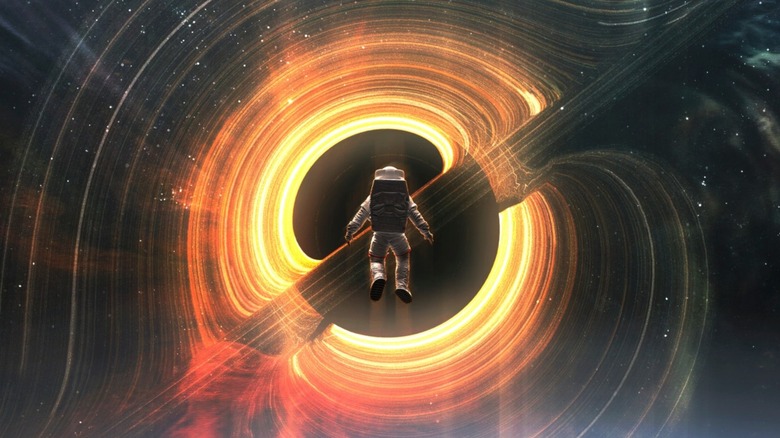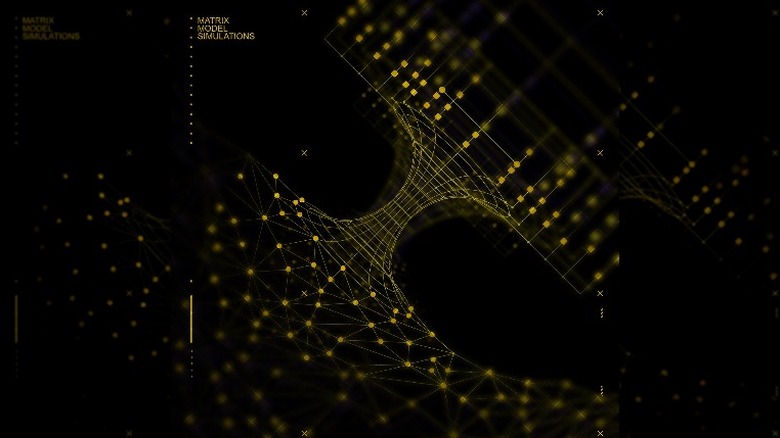What Is Inside A Black Hole? Here's What Astronomers Say
Black holes are some of the most mysterious phenomena in the universe. A recent study from the University of Michigan has added even more mystique to these deep-space wonders, suggesting that black holes are simply holograms. These researchers aren't suggesting that black holes are holograms the way most people imagine holograms to be, as some kind of sci-fi projection. Instead, they're using the idea of holograms to explore how the inside of a black hole connects to the outside.
The study, headed by Enrico Rinaldi, is based upon an idea known as holographic duality. This states that the theory of gravity and the theory of particles are mathematically the same. However, the theory of gravity describes the third dimension, while particle theory describes the second. As far as black holes go, both of these theories are relevant in describing how they operate. The University of Michigan study looked into what this holographic duality idea means for black holes and what's inside of them.
How the inside of a black hole works
Our concept of the inside of a black hole is based on the theory of gravity, which suggests that it operates in the third dimension. Space-time moves into and through a black hole from the outside. However, the outside of a black hole isn't calculated the same way as the inside. The outside of a black hole is perceived as flat, despite the inside operating in 3D.
The latest research by Rinaldi uses two simulation methods at the same time to ultimately calculate and describe what the gravity of a black hole looks like. The inside of a black hole has a gravitational pull that is such that we cannot "see" what's going on with our human eyes — a model of what's going on must be calculated mathematically. The way we perceive what's happening inside of a black hole is — as Rinaldi suggests — best described by way of a holographic projection.
Calculating the insides
A hologram — in this instance — is a flat (2D) image that shows us an image in three dimensions (3D). Take holographic Tupac, for example. The imagery of a 3D Tupac was holographically projected onto a 2D pane of mylar. This gave onlookers the same visual information they'd have gotten with a real 3D Tupac, even though what they were actually looking at was all on a 2D surface.
Using quantum matrix models to study the connection between the theory of gravity and particle theory, researchers have described a black hole with a three-dimensional center that we see projected to us courtesy of particles which are calculated in two dimensions. Again, according to these latest calculations, the inside of a black hole can only currently be described mathematically. Until we possess the ability to perceive the inside of a black hole in a way that doesn't mesh with our current understanding of the nature of the universe, we won't really, truly be sure if what we're seeing is all there is to see in 2D, 3D, or beyond.


